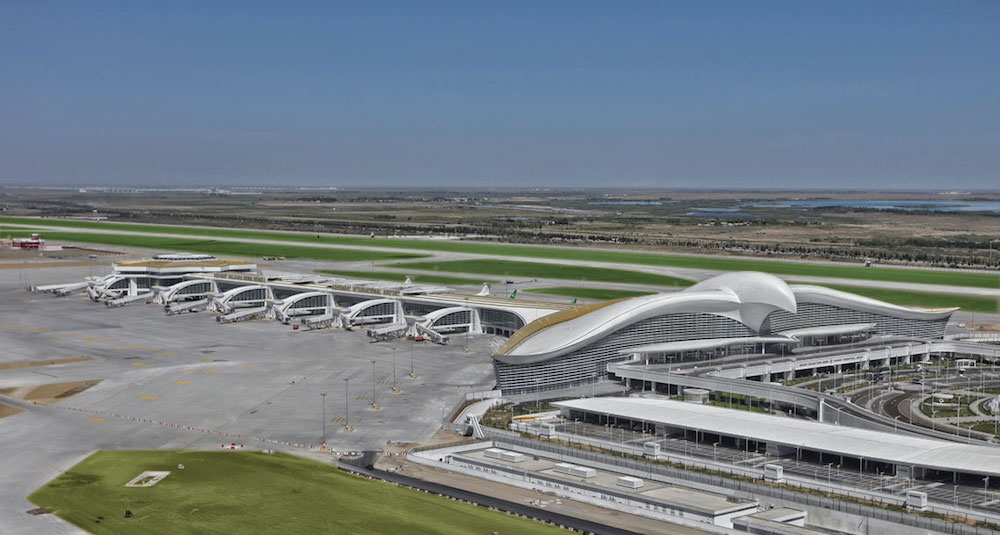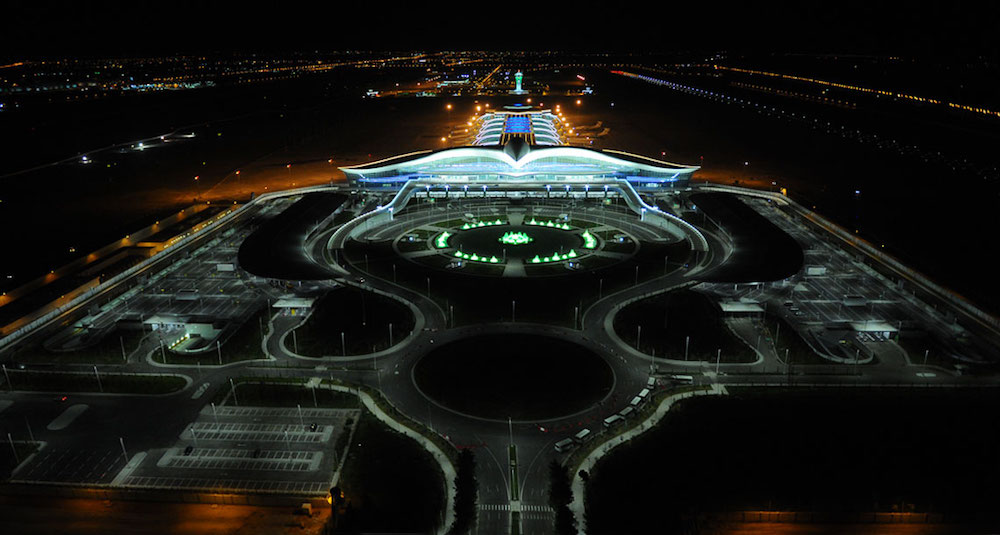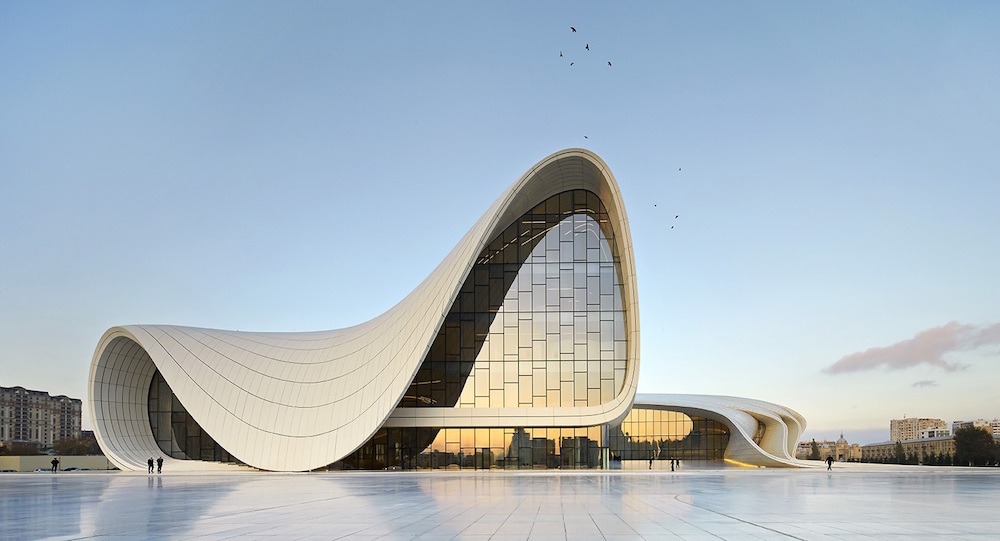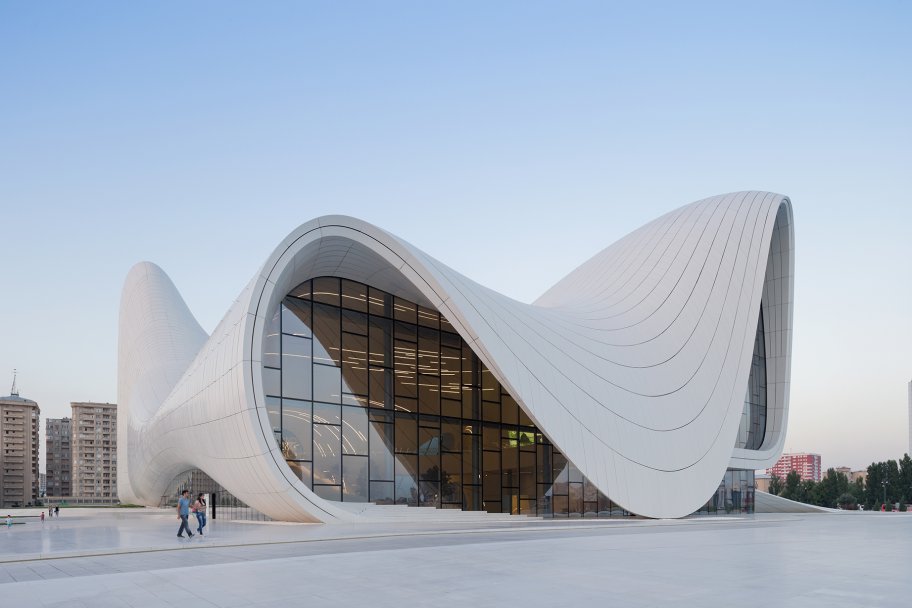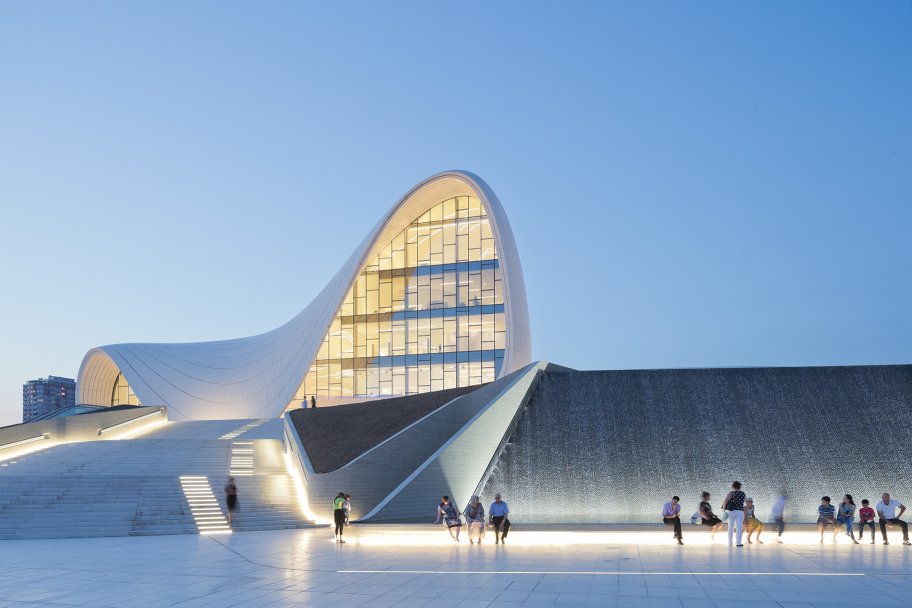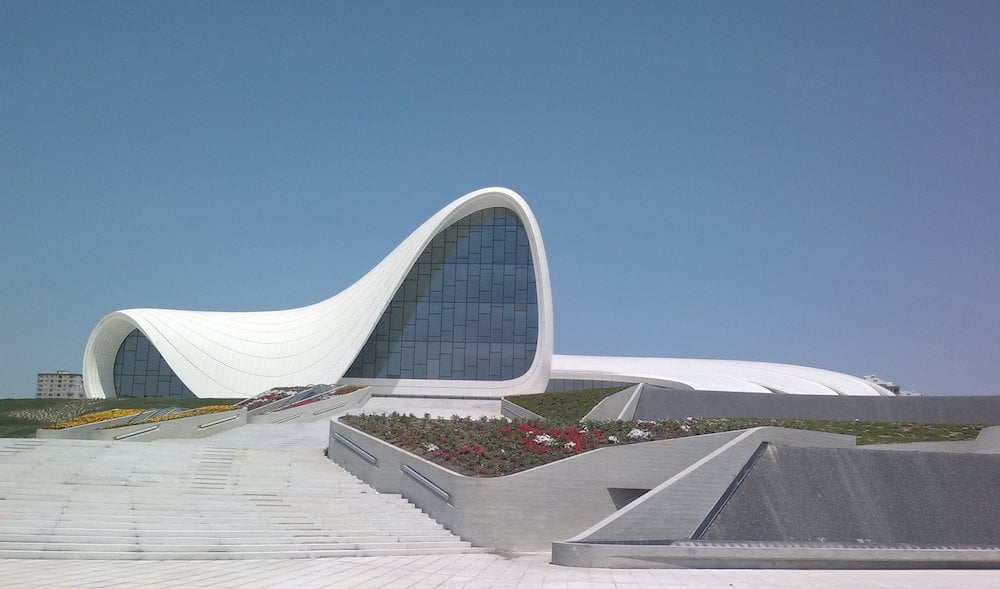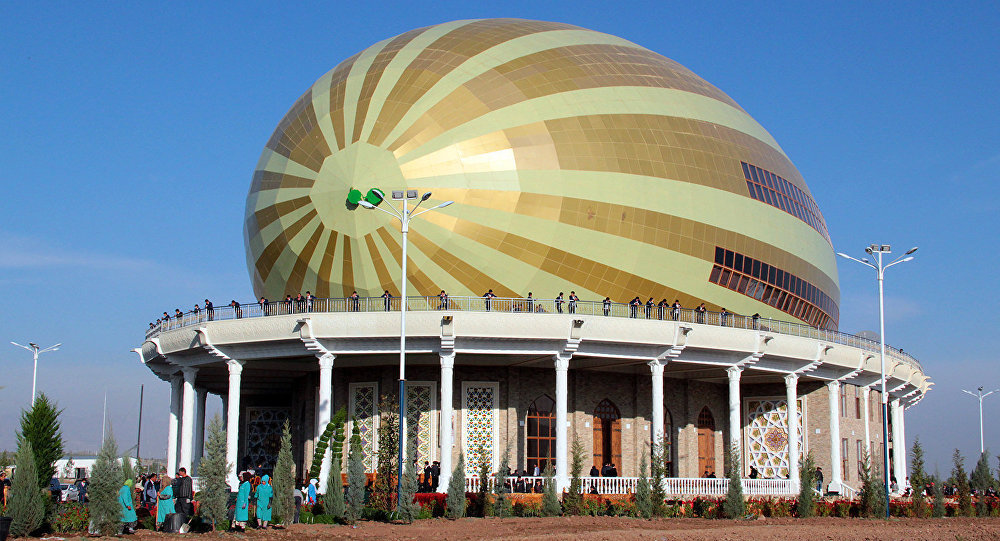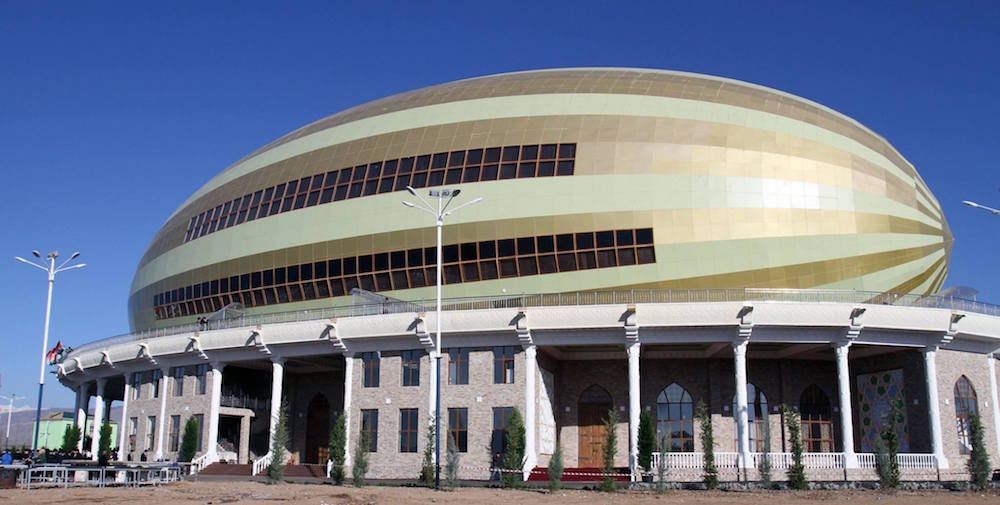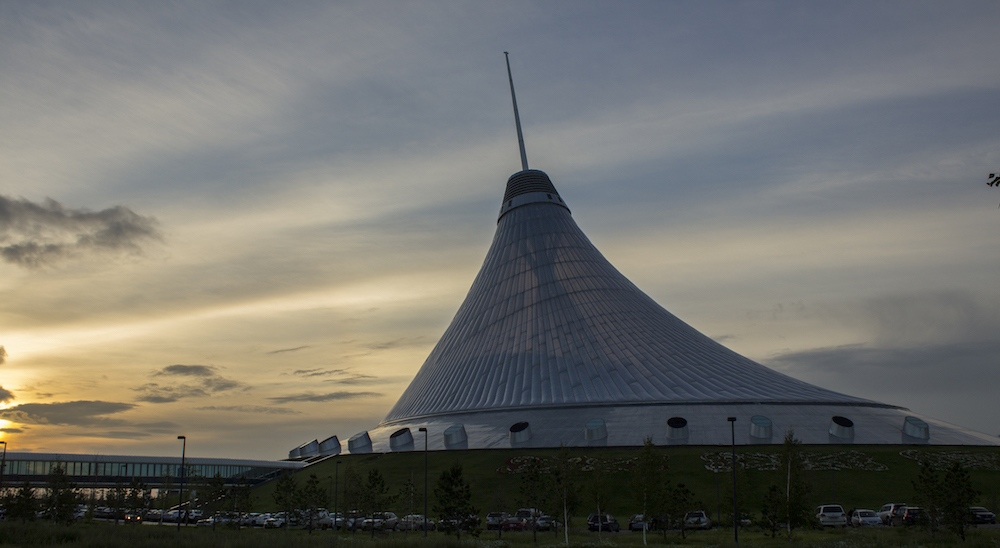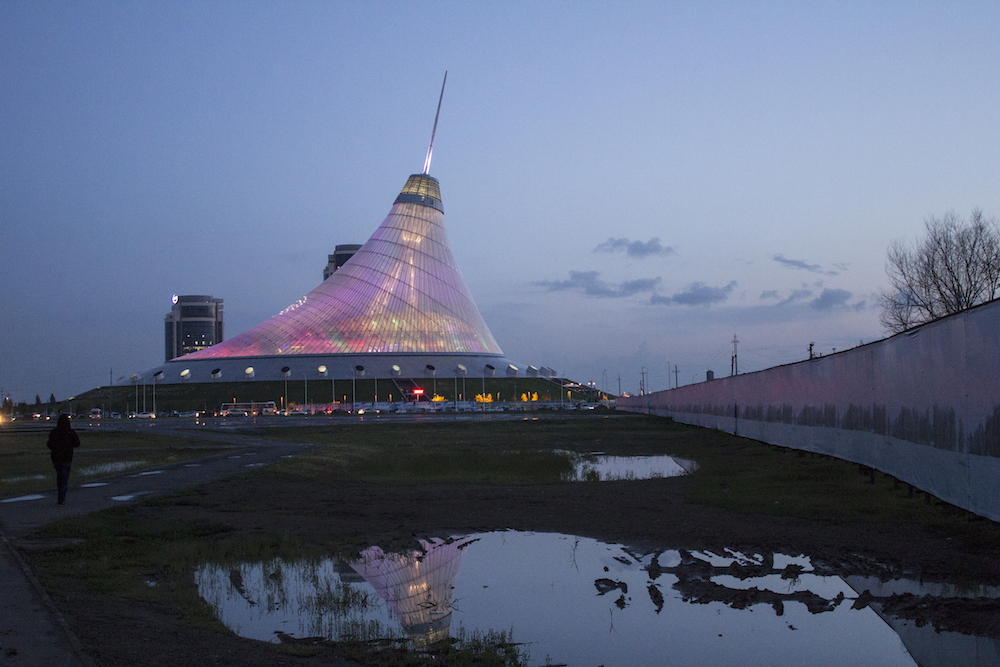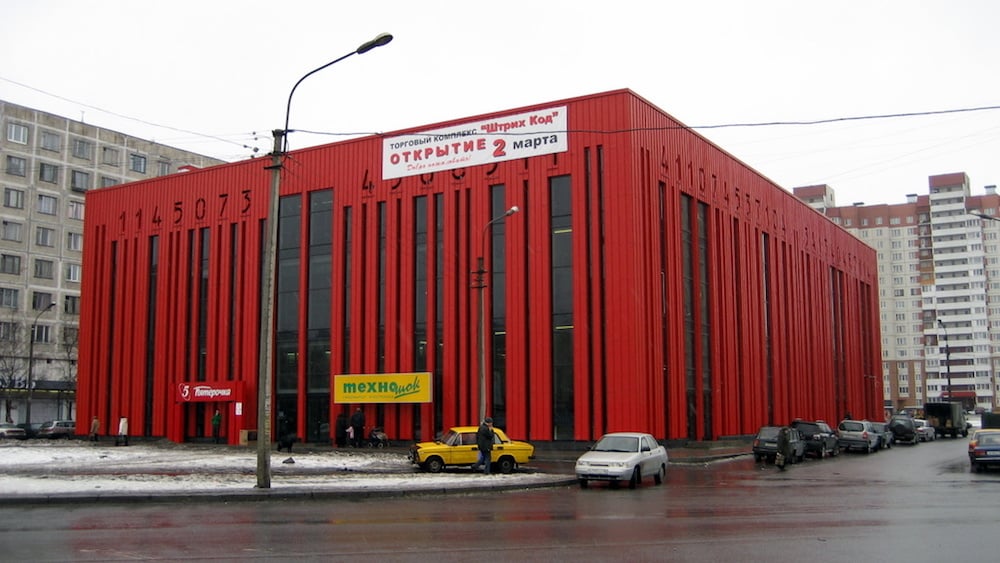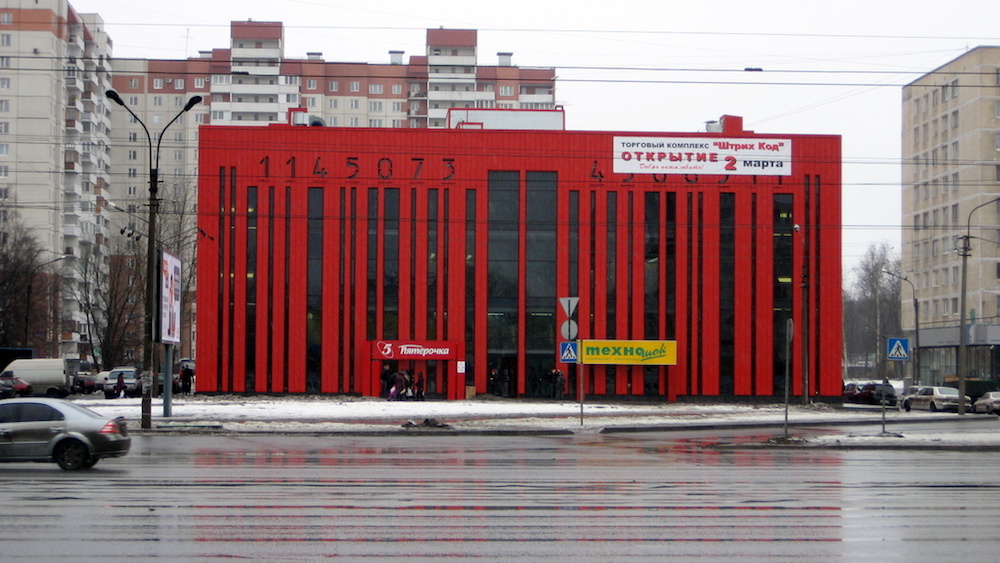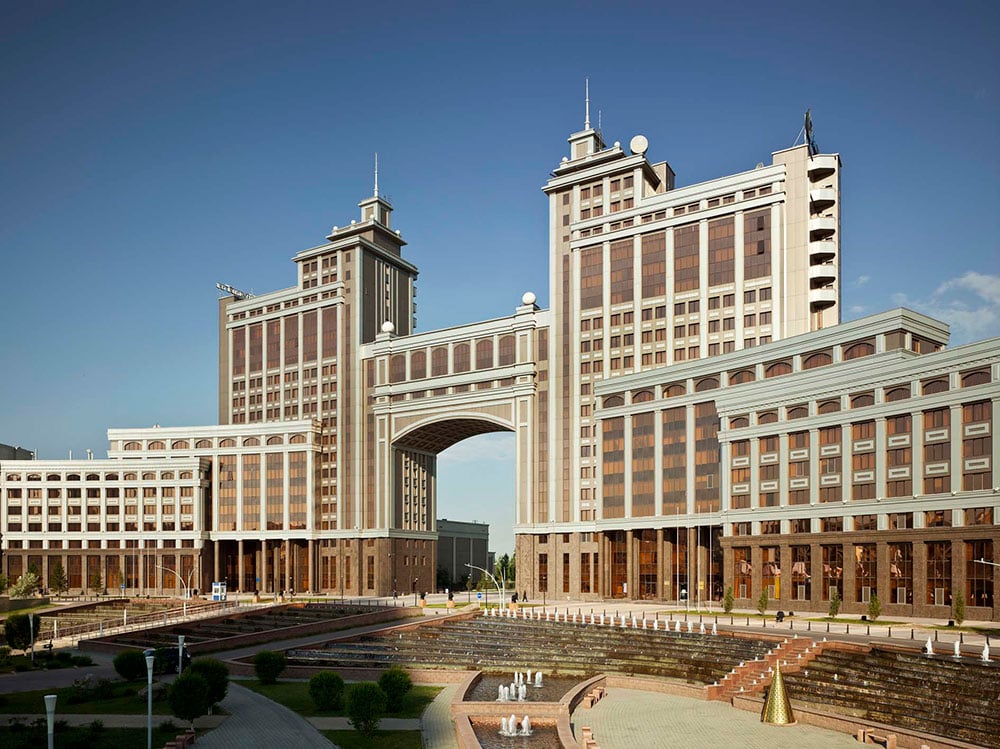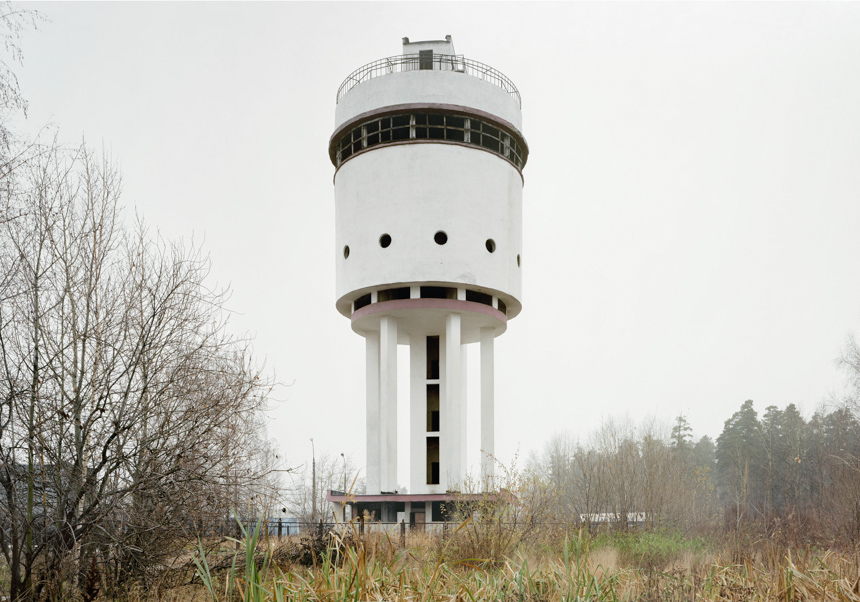Architecture gone wild: the 12 most insanely great contemporary buildings of the New East
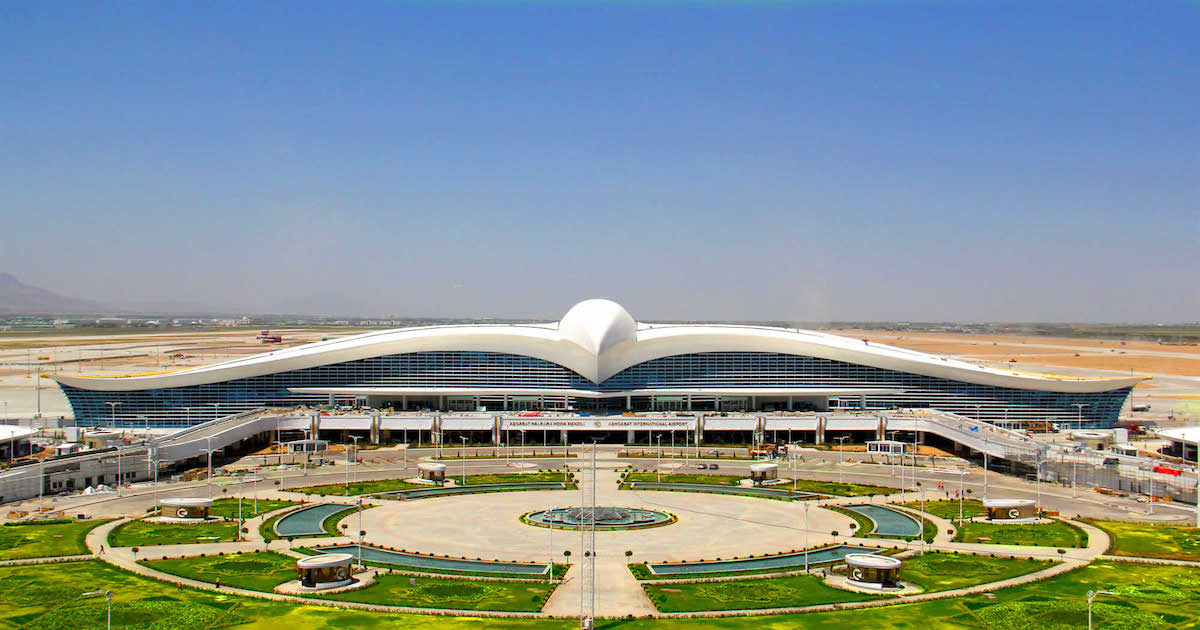
The Soviet era seems to get most of the applause when it comes to weird and wonderful New East architecture. Not ones to see good work go unrecognised, The Calvert Journal has compiled a handy list to show that you don’t need to go too far back to find some surprising, stellar architecture
The Falcon
Ashgabat International Airport, Turkmenistan
Is it a bird? Is it a plane? It could be either at Ashgabat International Airport. Serving the capital city of Turkmenistan, the new airport, designed to resemble a falcon in flight, was unveiled just last month. In a feat of perfect cohesion the terminal building echoes the emblem of flag carrier Turkmenistan Airlines. Not everyone is a fan of the building, however. This is, at least in part, because the airport has been built to process 17 million passengers a year and cost a whopping $2.3 billion to construct in a country that only welcomed 105,000 tourists in 2015. At the time of writing, the airport has few more than 250 followers on Instagram, but surely deserves more — show your enthusiasm for avian-inspired architecture!
The Rhombicuboctahedron
National Library of Belarus, Belarus
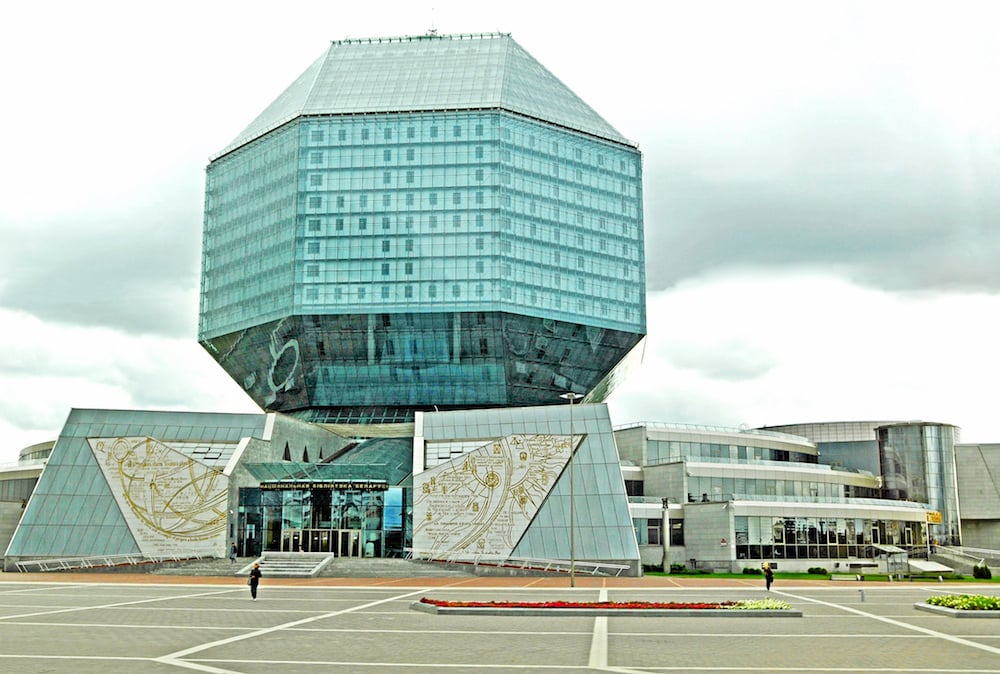
The National Library of Belarus owes its distinctive shape to a 1989 USSR-wide design contest, won by architects Viktor Kramarenko and Mikhail Vinogradov. The library’s main architectural component takes the shape of a rhombicuboctahedron (now there’s a fun word to try and say), which is supposed to symbolise the knowledge stored in the books within. The project was a long time in the making, though — construction only began in 2002 and wasn’t finished until 2006. Now housing the world’s largest collection of Belarusian printed materials and the third largest collection of Russian-language books, the building has 22 floors and can seat around 2,000 avid readers. Centre of learning by day, and a little disco-like by night, the building’s exterior is fitted with LEDs, which light up the library in impressive style during the night hours.
The Carpet
Azerbaijan Carpet Museum, Azerbaijan
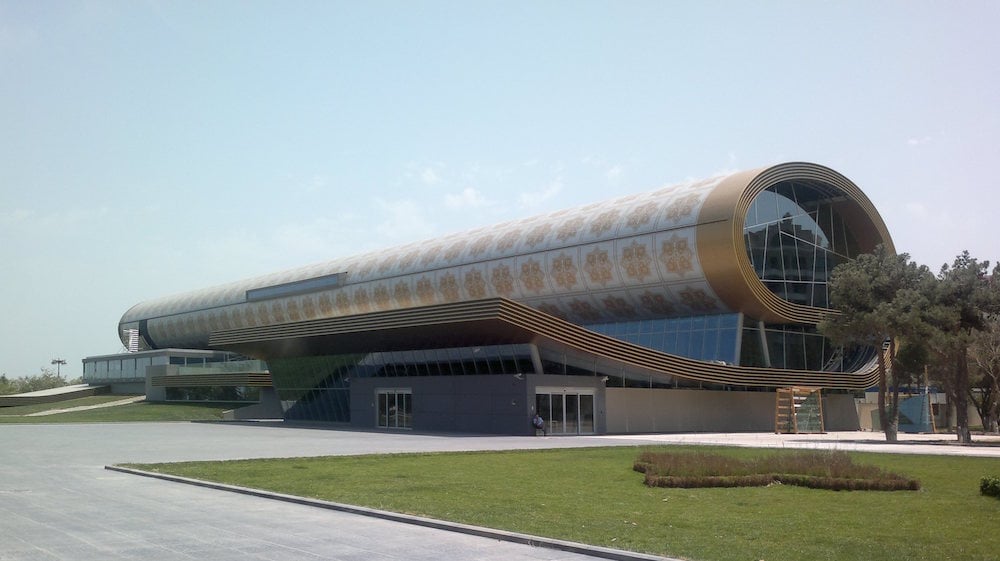
Form meets content at Baku’s Azerbaijan Carpet Museum, a five-storey structure modelled on the shape of a rolled carpet. With carpet weaving the country’s most widespread folk art, the carpet has becoming something of a national symbol, despite the fact that it was Austrian architect Franz Janz who was brought in to design the building. “Carpets are our national art. It is impossible to imagine Azerbaijan without carpets and carpets without Azerbaijan,” said President Ilham Aliyev at the opening ceremony in 2014. Who are we to disagree?
The Spaceship
Heydar Aliyev Centre, Azerbaijan
As controversial as it is impressive, Baku’s Heydar Aliyev Centre is known for its distinctive undulating architecture. Housing an auditorium, a gallery hall and a museum, with each of these functions represented by folds in the structure’s single continuous surface, the centre has become a signature landmark of Baku. The building was designed by Zaha Hadid Architects, with the late Hadid herself describing the project as an “incredible achievement”. The building was awarded Design of the Year in 2014 by London’s Design Museum, a win that was subject to considerable protest, owing to reports of forced evictions for the sake of construction.
The Melon
National Tea House, Tajikistan
Tajikistan takes melons very seriously. This was especially evident last October, when President Emomali Rahmon inaugurated a melon-shaped national tea house in the country’s western Gissar region. According to the president’s press service, the tea house is unique in its shape and design. The novel construction was celebrated with a grand opening ceremony worthy of the awe-inspiring 43-metre-high fruit-inspired structure, which can accommodate over 2,000 people. It was described as “magnificent” and “unusual” in a report on state-run Tajik TV First Channel – that it certainly is.
The Bowl
Civil registration office, Russia
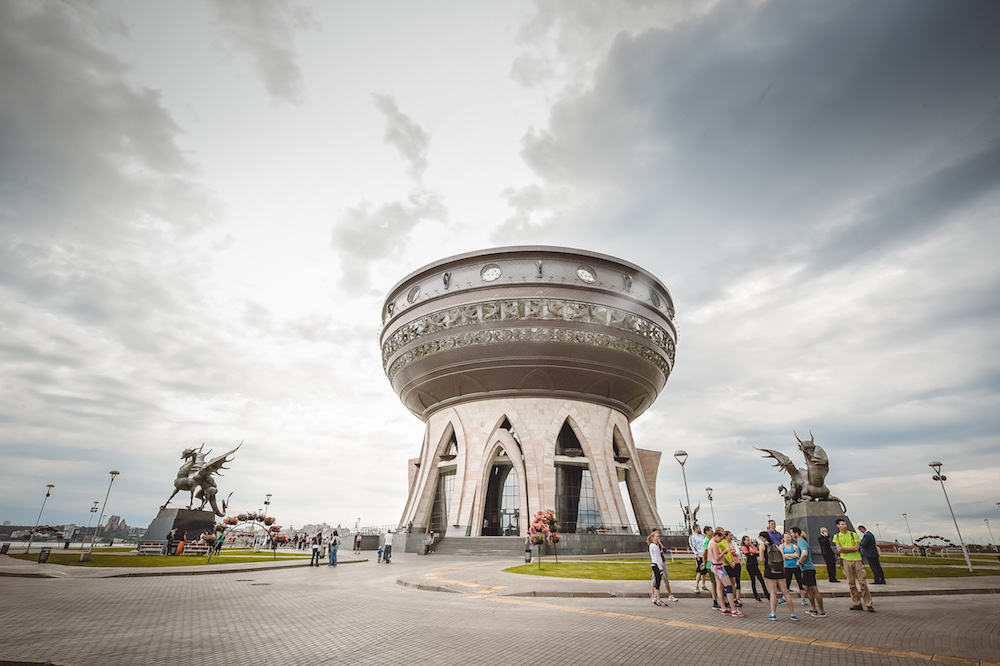
So, you’re looking for a striking and unusual place to hold your wedding? Look no further! Kazan’s Civil Register Office, also known the “Bowl”, could be the perfect place. Offering panoramic views across the capital of Tatarstan, the Bowl provides a feast for the eyes both for those inside and those admiring it from afar. The structure was built for the XXVII Summer Universiade in 2013 and can be considered a symbol of the city itself — Kazan means “bowl” in the local Tatar language.
The Fiasco
Hungarian Pavilion at Milan Expo 2015, Hungary
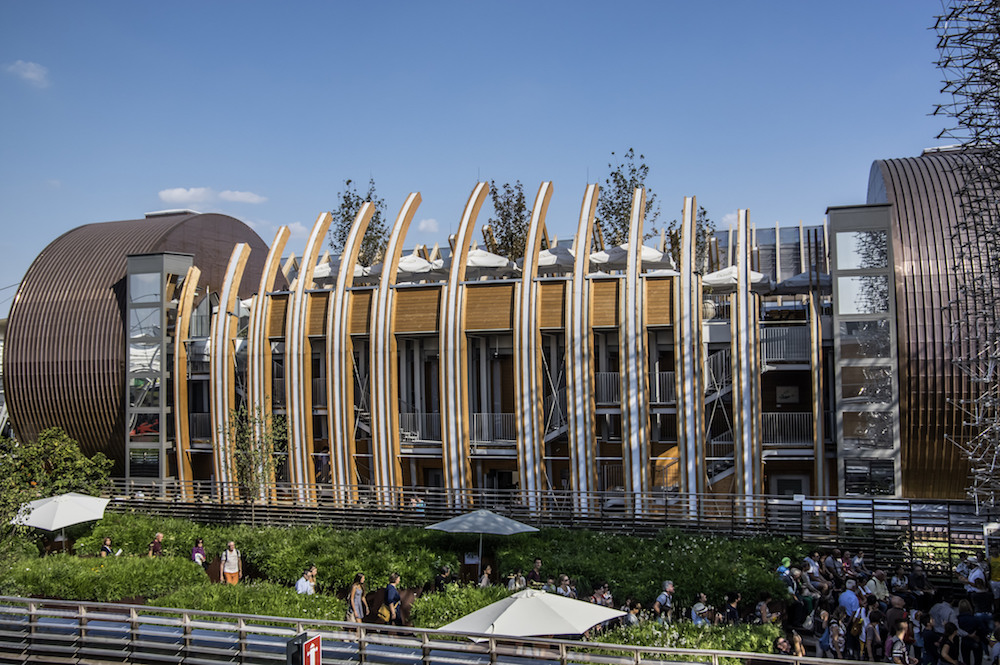
There’s never a dull moment with the Hungarian pavilion — the building’s journey from concept to construction and post-Expo future has been fraught with contention. Apparently designed as a point of reflection on nature, the unconventional structure is made with environmentally friendly materials, with the huge shamanic drums at either end of the building referring to the mystical bond between man and nature. The pavilion’s distinct design drew criticism both from architects and the general public, and its designers have since disassociated themselves from the building. Following the seizure of the building by the Italian authorities, owing to a disagreement regarding the settlement of construction costs, the pavilion has been dismantled and moved to Hungary, where it is set to become an equestrian museum!
The Tent
Khan Shatyr Entertainment Centre, Kazakhstan
You won’t find the world’s tallest tent at any campsite – to see it you’ll have to head to the Kazakh capital, Astana. Khan Shatyr Entertainment Centre stands at 150m tall and covers a massive 100,000 square metres. Inside you can find a shopping centre, cobbled squares, a park, mini-golf, a river and even an indoor beach resort. What’s more, it’s always sunny at Khan Shatyr – the tent is made from a high-tech material that absorbs sunlight to create the effect of an endless summer inside. With an area greater than ten football stadiums, Khan Shatyr is nothing short of a monumental project and since its unveiling in 2006 has served as Astana’s principal civic and cultural venue.
The Crooked Little House
Krzywy Domek, Poland
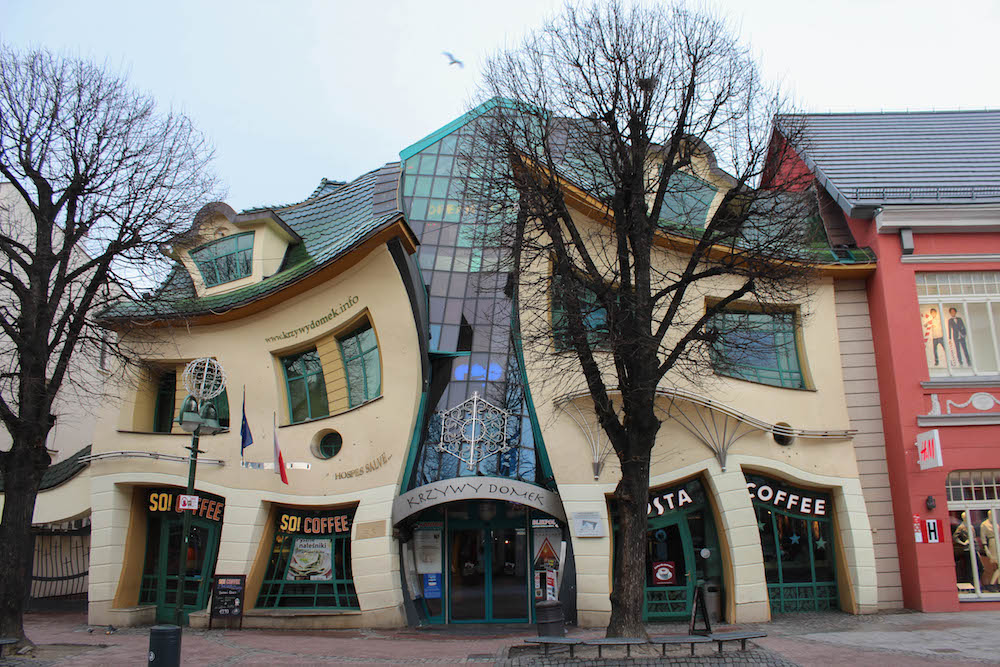
If you walk past Krzywy Domek in the northern Polish seaside resort town of Sopot, you could be forgiven for thinking you’d stepped into the pages of a fairytale book. With its name translating as “crooked little house”, Krzywy Domek pretty much does what it says on the tin. Built in 2004, Krzywy Domek was designed by architecture firm Szotyńscy & Zaleski, who took inspiration from the fairytale drawings of Polish illustrator Jan Marcin Szancer and the work of Swedish artists Per Dahlberg. Slightly less magical in purpose, Krzywy Domek forms part of a shopping centre.
The UFO
Gorkovskaya Metro Station, Russia
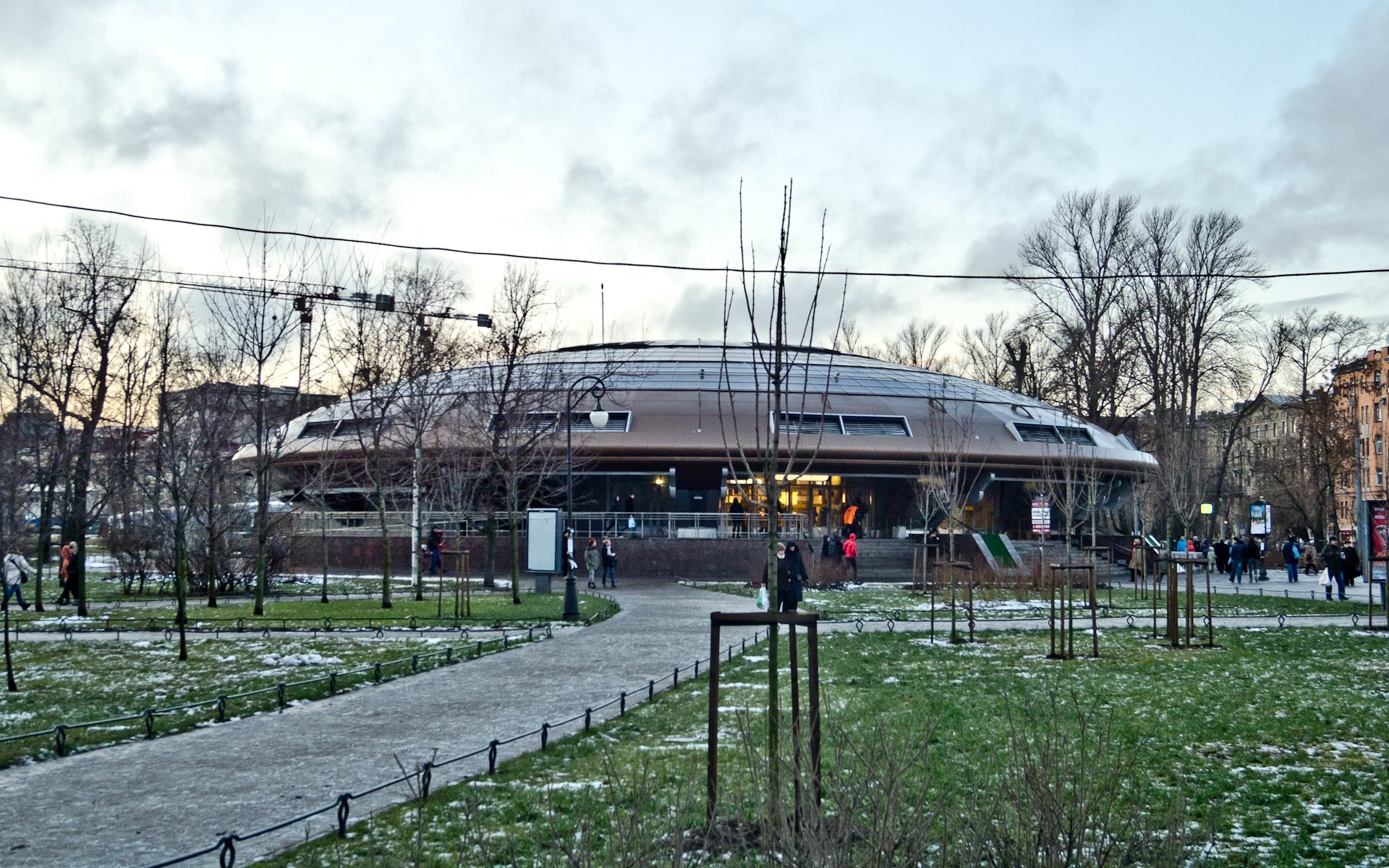
St Petersburg’s Gorkovskaya metro station could quite rightly be described as out of this world. Ok, so maybe it isn’t quite 21st century (it originally opened in 1963), but the station opened afresh after an 14-month reconstruction in December 2009, so we think it counts… Whether the design was actually UFO-inspired we’re not sure, but the resemblance to a flying saucer is uncanny.
The Barcode Building
Shtrikh Kod shopping centre, Russia
Move over Church of the Saviour on Spilled Blood and the Hermitage, a rather different architectural treasure is gaining traction in St Petersburg. The city’s Barcode building is symbolic of its very use as a retail space, and turns a functional commercial tool into a feature of architectural design, with its tall windows creating a striking impression of a barcode. Completed in 2006, the red-coloured structure adds a dose of vibrancy and curiosity to an otherwise fairly nondescript area.
The Truck
Fura Shop, Russia
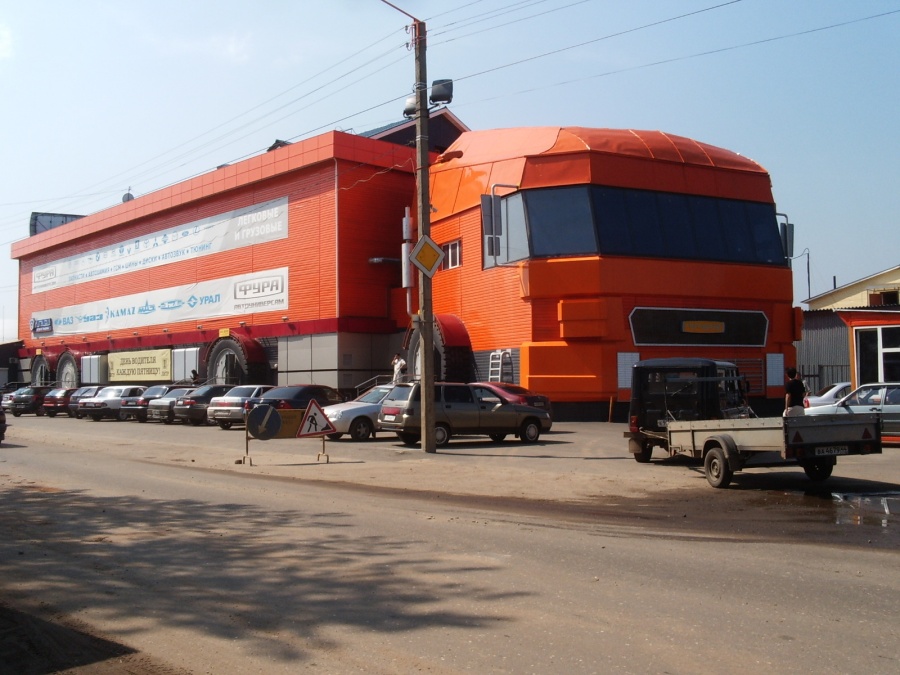
Although known for its beautiful cathedral and monasteries, Kostroma really found its place on the map for one reason — not just any city can boast the world’s biggest building in the form of a truck. The gigantic lorry-inspired building, which opened in 2007 and stands at a whopping 67 metres long, is home to the local auto parts store.
